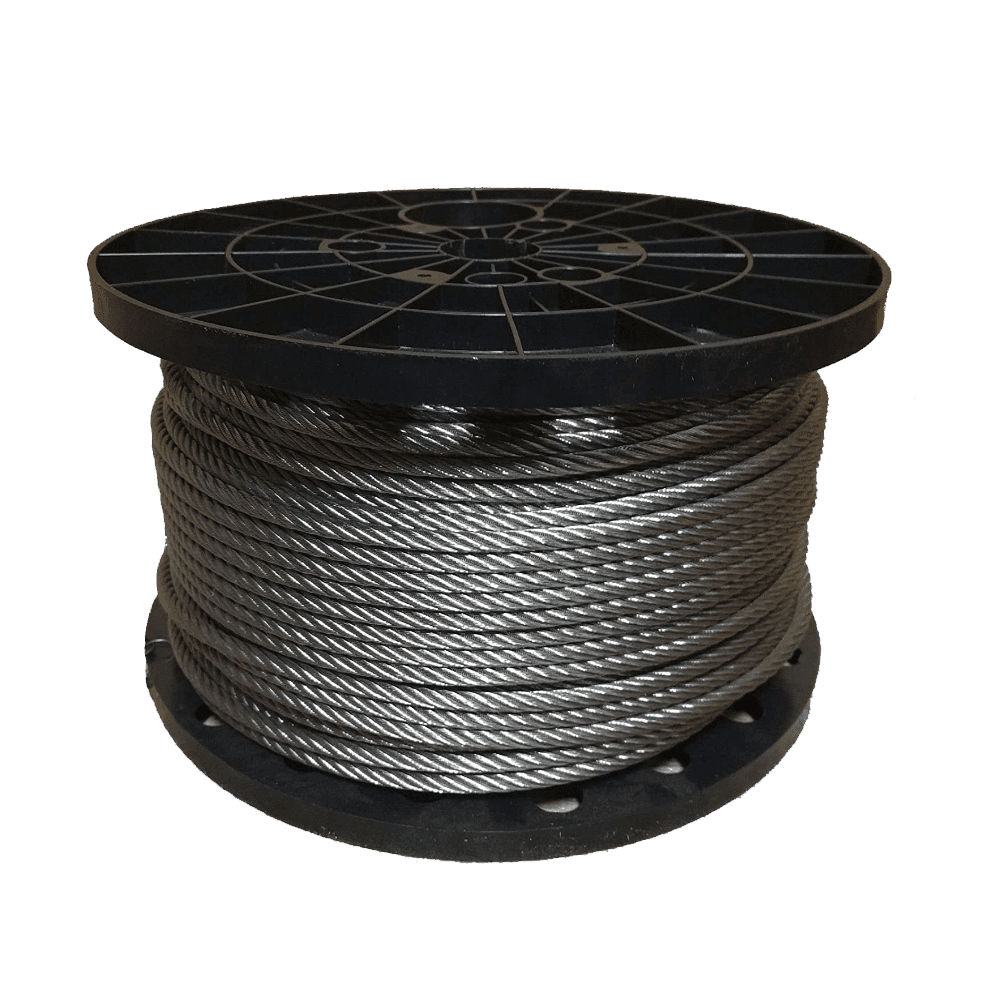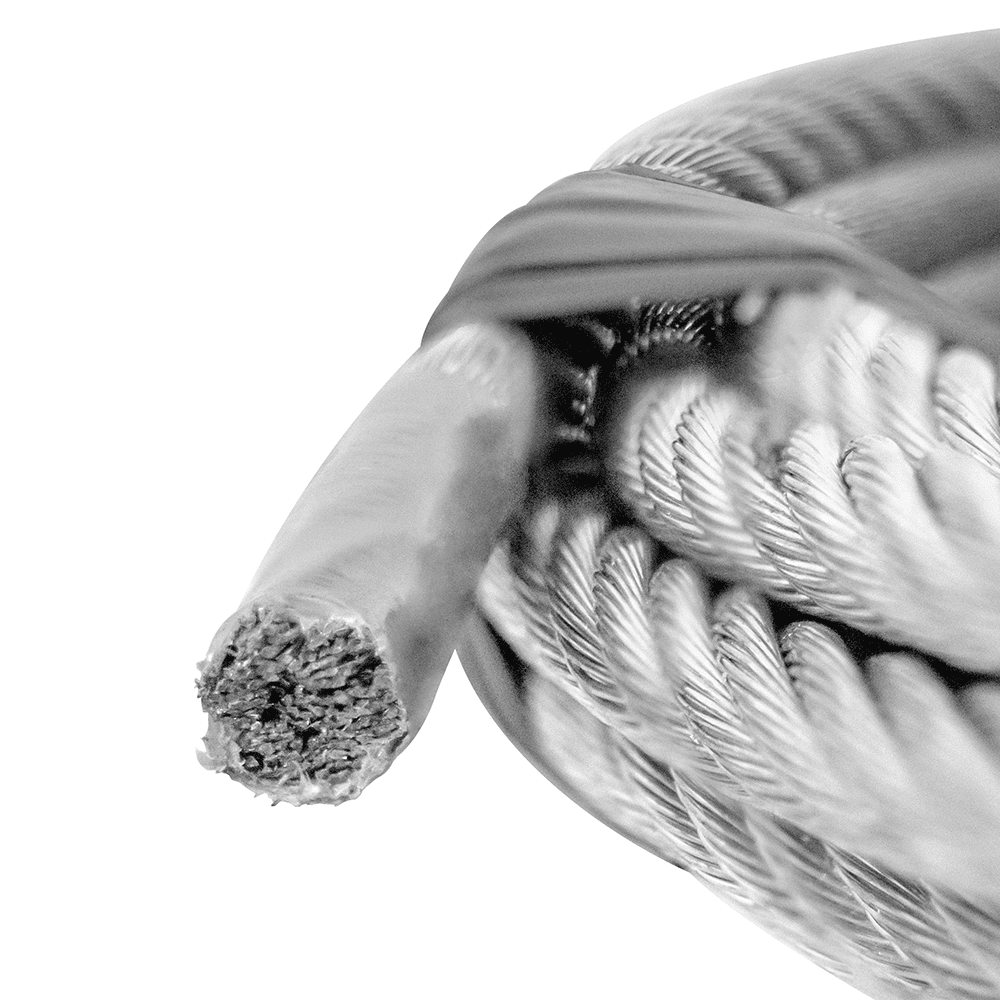Galvanized Steel Cable
The Galvanized Steel Cable for boat lifts is like a superhero for your boat, strong and ready to go! It’s cut to fit, making it easy to install and perfect for keeping your boat safe in freshwater.
Strength and Durability: Picture it as a tough 7 x 19 rope, ready to lift even the heaviest boats. The galvanized part makes it even stronger, outdoing stainless steel.
Corrosion Resistance: It fights off rust pretty well, great for freshwater. The special coating shields it from rust. But if you’re in saltwater, think about using stainless steel for extra protection.
Flexibility and Compatibility: This cable is super flexible, gliding smoothly in your boat lift. It keeps things running smoothly and reduces the chance of things going wrong.
Safety and Sizing: Follow the safety rules and tips from ASME when picking your cable size. Don’t only think about breaking strength. This cable is your go-to for freshwater boats, and it comes in different sizes.
Conclusion: The Galvanized Steel Cable is your buddy for freshwater boat lifts. It’s strong, fights off rust, and moves like a pro. If you’re dealing with saltwater, check out stainless steel. This cable is your sidekick for a smooth lift.
Aircraft Cable: BH-USA thinks 7 x 19 aircraft cables are perfect for boat lifts, with a 5:1 safety factor. Don’t use them for flying planes or lifting people, though!
Safe Working Load vs. Minimum Breaking Strength: Put Safe Working Load (SWL) first, not breaking strength. SWL includes a safety factor for real-life stuff. Don’t just rely on “Breaking Strength” when you rate a cable.
Specifications
| Lift Size | 1 Part Straight Line | 2 Part Compounded |
| 2,800 lbs. | 3/16 in. | 3/16 in. |
| 4,500 lbs. | 1/4 in. | 3/16 in. |
| 6,000 lbs. | 5/16 in. | 1/4 in. |
| 9,000 lbs. | X | 1/4 in. |
| 10,000 lbs. | X | 1/4 in. |
| 13,000 lbs. | X | 5/16 in. |
| 16,000 lbs. | X | 3/8 in. |
| 24,000 lbs. | X | 3/8 in.* |
The first step in deciding what size wire rope is required for your lift is to determine the total weight to be lifted which will include the “wet” weight of the boat, the maximum estimated cargo that could be put in the boat during the lift, and the weight of the lifting cradle
- Boat
- Fuel
- Water (Ballast, live well, potable, etc.)
- Any cargo items in the boat (Note: There should never be people in the boat while being lifted.)
- Boat cradle and bunks
The boat weight specified by a manufacturer is typically the “dry” weight of the boat. To get the “wet” weight, you must include the weight of the fuel (gasoline is 6.30 lb/US gal and diesel is 6.94 lb/US gal), the weight of any water (8.34 lb/US gal) that may ever be present in the boat and the estimated weight of the possible cargo (ie – coolers, skis, etc.).
Cable Ratings
| Cable Size | Cable Material | Lifting Capacity | Min. Breaking Strength | Safe Working Limit | Best Water Type |
| 3/16 in. | Stainless | 1,050 lbs. * | 3,700 lbs. | 925 lbs. | Saltwater |
| 3/16 in. | Galvanized | 925 lbs. * | 4,200 lbs. | 1,050 lbs. | Freshwater |
| 1/4 in. | Stainless | 1,750 lbs. * | 6,400 lbs. | 1,600 lbs. | Saltwater |
| 1/4 in. | Galvanized | 1,600 lbs. * | 7,000 lbs. | 1,750 lbs. | Freshwater |
| 5/16 in. | Stainless | 2,450 lbs. * | 9,000 lbs. | 2,250 lbs. | Saltwater |
| 5/16 in. | Galvanized | 2,250 lbs. * | 9,800 lbs. | 2,450 lbs. | Freshwater |
| 3/8 in. | Stainless | 3,600 lbs. * | 12,000 lbs. | 3,000 lbs. | Saltwater |
| 3/8 in. | Galvanized | 3,000 lbs. * | 14,400 lbs. | 3,600 lbs. | Freshwater |
* – Use a minimum of 4 drops for boat lift applications
NOT FOR LIFTING HUMANS
No product can operate indefinitely at its rated capacity. Wire rope and Cable must be inspected regularly for any deterioration which may result in the loss of original strength. Users must determine whether further use of the rope would constitute a safety hazard to life or property. Lubricate operating ropes regularly. Keep out from under any raised loads and keep out of the line of force of any load.
AVOID SHOCK LOADS.
Due to the uncontrollable situations in which this cable is used after the purchase, BH-USA cannot warranty or be held liable for cable past the purchase date. It is the responsibility of the ultimate user to determine a working load limit for each application. Many factors should be considered: included among, but not limited to, loads applied, speed of operation, acceleration or deceleration, length of rope or cable, shock loads, abrasion, corrosion, number, size, condition, and location of drums and sheaves, facilities for inspection, and the danger to life and property should a rope or cable break. Wire Ropes and Cables must be stored, used, lubricated, and maintained in accordance with normal safety standards; and must be properly designed, maintained, and operated. Inspect regularly.
Do not kink, knot, or crush. Do not ever use wire rope sold by or made by BH-USA to lift humans in any way.
Product Overview
- Commercial-grade cable
- Stainless is the best for saltwater application
- Size determined by the outer diameter
- Cut in-house at BH-USA
Product Guides
Related Products
You may also like...
-
Galvanized Malleable Wire Rope Clips
$0.23 – $0.59 Select options -
Galvanized Drop Forged Wire Rope Clips
$0.51 – $1.51 Select options -
Galvanized Wire Rope Thimbles
$0.50 – $1.14 Select options







